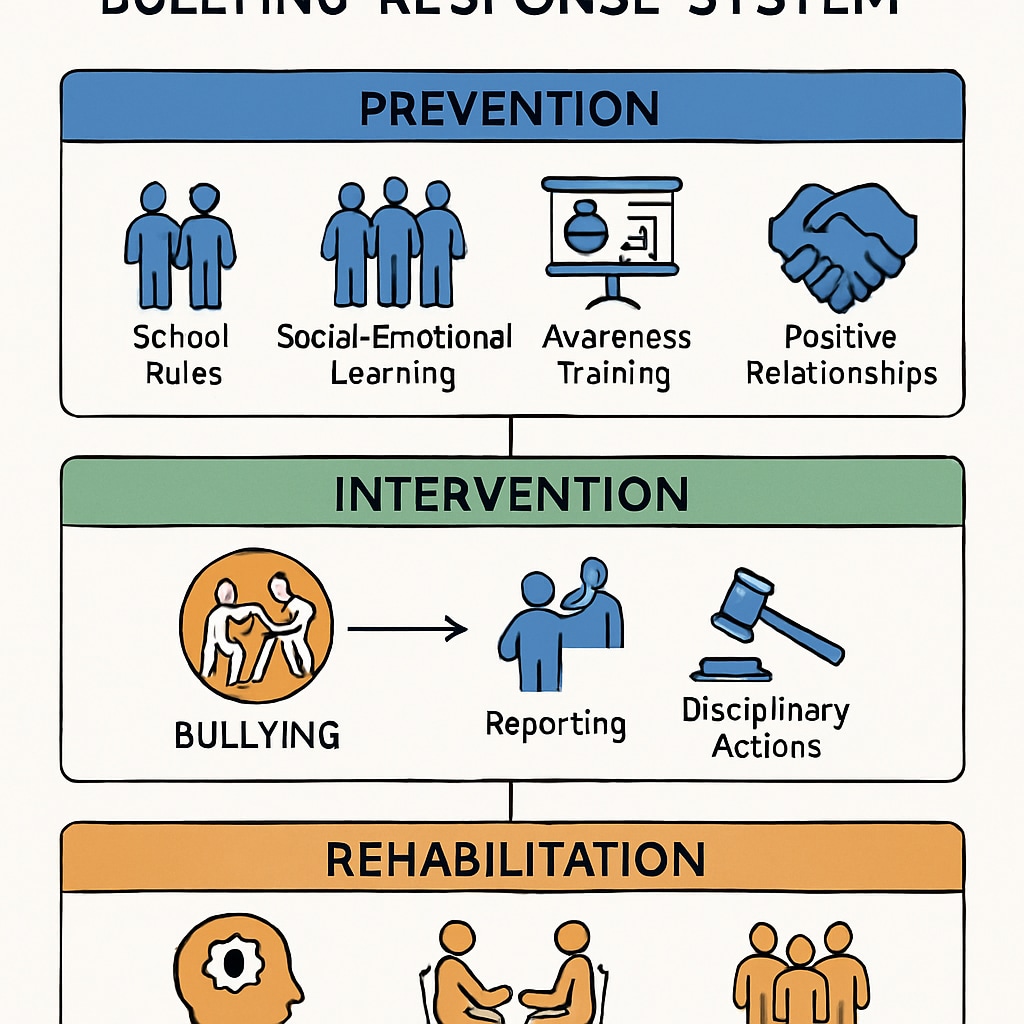The persistence of school bullying has brought the need for effective solutions to the forefront of educational discussions. Addressing bullying management, school administration, and behavioral outcomes is vital for creating a safe and supportive learning environment. This article outlines the design of an ideal bullying response system that emphasizes both immediate intervention and long-term education to shape socially responsible and emotionally intelligent students.
Defining Bullying: A Crucial First Step
One of the major challenges in addressing bullying is establishing a clear and universally accepted definition. Bullying involves repetitive aggressive behavior, whether physical, verbal, or psychological, that harms a victim. Teachers, parents, and students must be well-versed in identifying bullying incidents. For example, Wikipedia defines bullying as actions that intimidate or harm others, creating an imbalance of power. Schools must ensure consistent training programs to educate staff and students about the signs and impacts of bullying.

Building a Multi-Tiered Response System
An ideal bullying management system integrates multiple levels of intervention:
- Primary Prevention: Schools can implement proactive measures such as anti-bullying campaigns, safe reporting channels, and inclusive activities that promote empathy.
- Secondary Intervention: When bullying occurs, immediate actions such as mediation, counseling, and parental involvement are essential to address the issue effectively.
- Tertiary Support: For repeated or severe cases, more robust measures like disciplinary actions or rehabilitation programs may be required to protect victims and reform perpetrators.
This tiered approach ensures that both victims and offenders receive adequate support while fostering a culture of accountability.

Balancing Discipline with Education
A punitive approach alone may not address the root causes of bullying behavior. Instead, schools should focus on balancing discipline with education. For instance:
- Restorative practices encouraging offenders to understand the emotional impact of their actions and make amends.
- Workshops on emotional intelligence, conflict resolution, and empathy-building tailored to the needs of both victims and offenders.
- Parental engagement programs to align home and school efforts in managing bullying behavior.
As a result, offenders learn to take responsibility for their actions while victims regain confidence and trust in the school environment.
Fostering a Culture of Accountability
Creating an ideal bullying response system also involves cultivating a culture of accountability. Schools must set clear policies that outline behavioral expectations and consequences for bullying. Transparency in the enforcement process builds trust among students, parents, and staff. For example, Britannica explains bullying as a systemic issue that can be mitigated through consistent and fair policies. Schools should encourage students to report bullying incidents without fear of retaliation, ensuring that their voices are heard and respected.
Furthermore, regular reviews of the anti-bullying policies allow schools to adapt to emerging challenges and maintain a safe environment for all.
Readability guidance: Short, concise paragraphs and lists summarize key points for clarity. Overuse of passive voice is avoided, and transitional words like “however,” “in addition,” and “for example” enhance the flow of ideas.


